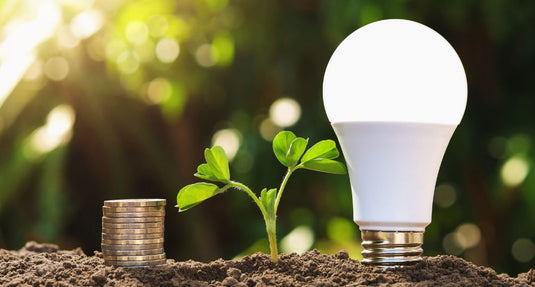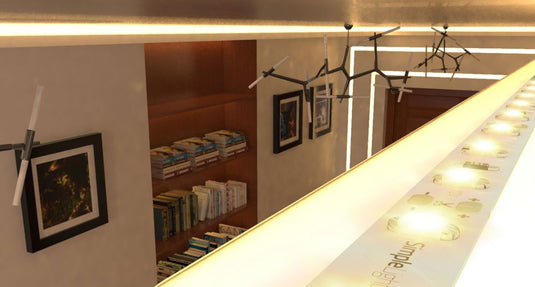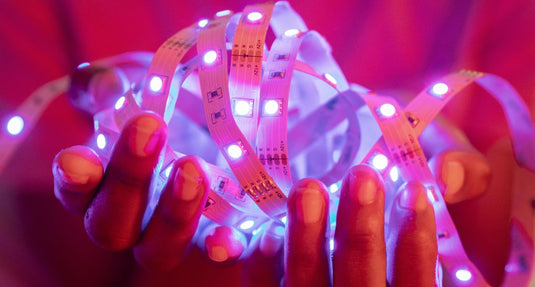What type of lighting are you using in your home or business? Do you still have incandescent bulbs and fluorescent tubes, or are you already using LED lighting? If you haven't made the switch, you're missing out on the benefits of an LED fitting!
Although traditional fixtures are affordable upfront, they're not as energy-efficient and long-lasting as LED fixtures. Looking at the long-term effect on your expenses, you'll be surprised how much savings you can earn from LEDs!
The Economics of Lighting: Traditional vs. LED
Why is LED lighting more energy-efficient and cost-effective than traditional fixtures? A traditional fitting, like an incandescent or fluorescent bulb, requires a significant amount of energy to produce substantial brightness. It's because they end up converting most of the energy they consume into waste (heat) instead of light.

With LED lighting, it's the opposite! Most of the electricity is converted into light with very minimal ending up as waste. Because of this, even if their wattage requirement is relatively low, it can still deliver outstanding illumination.
Furthermore, LED lighting doesn’t have parts that burn out fast, so they can last for 20,000 – 50,000 hours! If you look at it this way, LED lighting wins by a lot over traditional fittings. They're more affordable to run, and they last long, reducing your maintenance cost!
Energy-Efficiency: How LEDs Conserve Power and Money
How is it possible for LEDs to consume less energy? As mentioned, LEDs convert most of the electricity into light rather than heat. With LED technology, energy is used to solely create light. It's not light and heat like what traditional fixtures do. Because of this, LEDs are able to reduce the wattage requirement for lumens count that an incandescent bulb would require five times more!
In your room, if you're using an 84w fluorescent, you can switch to a 36w LED that will give you the same amount of illumination. What if you have six 84w fluorescents throughout your home, and you swapped them all out with a 36w LED? That’s 48w less times six!
Longevity and Reduced Replacement Costs
An incandescent bulb can last for approximately 1,000 hours. On the other hand, an LED bulb has an average lifespan of about 30,000 hours! How will this affect your budget scheme?
If you have incandescent bulbs throughout your home, you’ll need to replace them every month or every other month! With an LED bulb, you'll have around 13 years before you need to get a replacement. So, maintenance-wise, LED lights are better because you don't need to constantly order new bulbs and take time to replace every busted fixture.
Wattage vs. Lumens: Understanding Efficiency
With traditional lighting solutions, brightness is measured by wattage. So, the higher the wattage, the brighter the fixture. If you're used to the wattage-based measurement, it must have been surprising to see that some LEDs are 5w, 7w, and 10w!
Well, to make things clear, here's a definition of terms. Wattage is the unit of measurement for power, while lumens is the unit of measurement for brightness. Ever since the invention of LED technology, wattage does not quantify brightness. So, even if you see that an LED bulb is only 8w, it does not mean that it'll be quite dim. It only needs 8w to produce 610 lumens!
Because LEDs can achieve the same brightness with a lower electrical consumption, it has a lower energy cost. If your priority is to reduce your expenses without compromising on necessities, LEDs are the best choice!
Business Benefits: LED Lighting in Commercial Settings
What benefits can your business enjoy if you switch to LED lighting? Well, in an office, how many hours do your lights operate? About 8 hours, right? If your fixtures run for eight hours a day and consume 96w per hour per light, the energy consumption will pile up. Not just a small pile, a massive one!
A single LED panel only consumes 40w. That's already 56w less per fixture. So, if you do the math, where can you save more? LED lighting is energy-efficient and long-lasting. These qualities alone are an asset to your business because luminaires occupy a significant percentage of your electricity bill. With the reduced maintenance fees, you can reallocate your budget to more meaningful things!
In addition, LED lighting is a more sustainable choice. Besides having a long lifespan, it's low maintenance, so you don't need to check on them often. Just an occasional routine inspection to ensure there are no loose wires and everything is in place!
Conclusion: Illuminating the Path to Financial Savings with LED Lighting
LED lighting will light your path to financial savings! It’s energy-efficient, has an extended average lifespan, is low maintenance and is cost-effective. It’s the lighting solution you need if you want to cut down costs but not compromise quality! So, if you’re ready to make the switch, visit our website, LED Supplier. We have a broad range of LED products, including indoor, outdoor and commercial lighting solutions!




